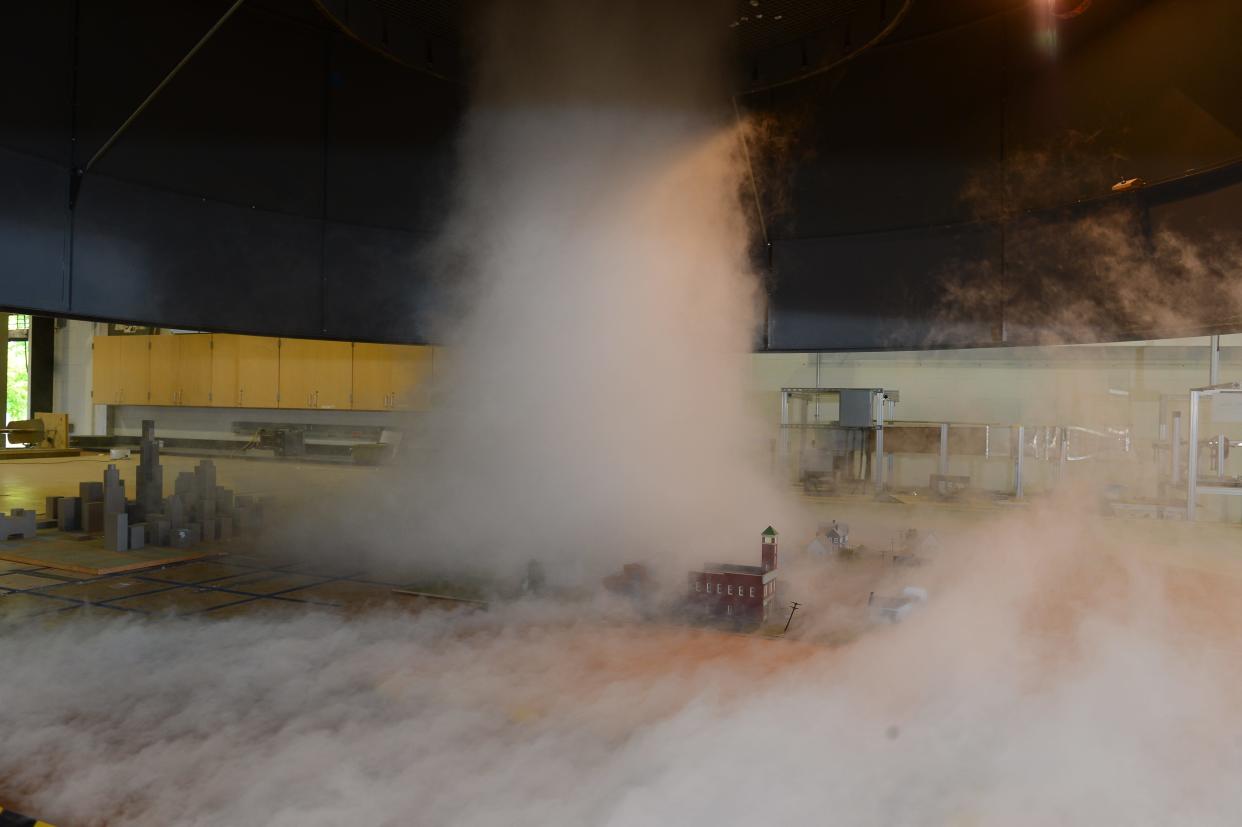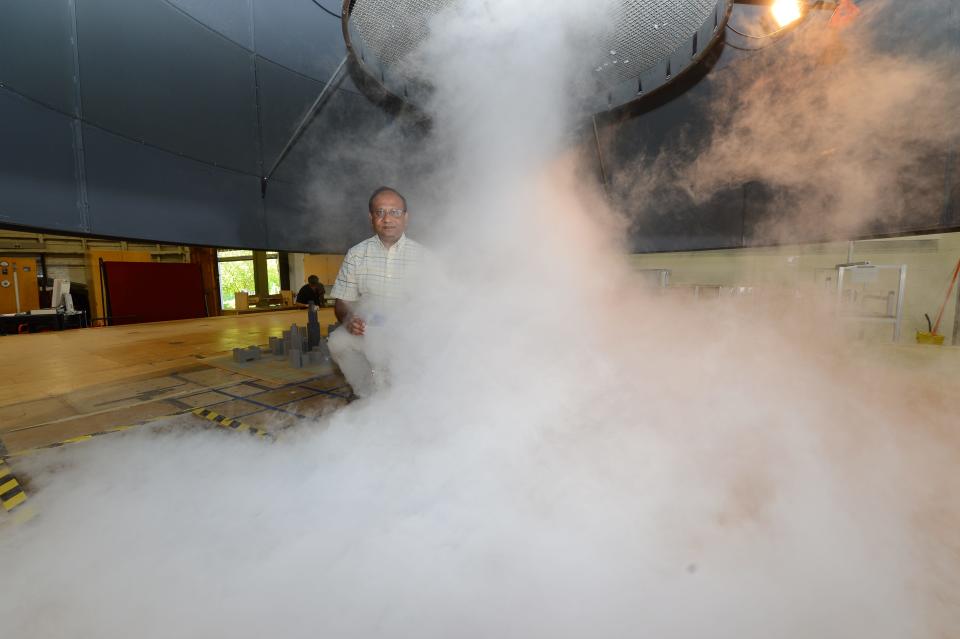How can buildings resist tornado damage? Proposed Iowa State facilities could find solutions

Iowa State University hopes to fine-tune its tornado research by building a facility that can simulate 200 MPH wind speeds.
The university plans to construct the National Testing Facility for Enhancing Wind Resiliency for Infrastructure in Tornado-Downburst-Gust Front Events (NEWRITE) and a smaller-scale prototype to help study the impact of tornadoes and other severe levels of wind.
Though Iowa State does have a facility that simulates tornado winds, NEWRITE Director Partha Sarkar said the project would allow researchers to analyze tornados on a much larger scale.
"Until now, we were just studying the load, how the loads are produced in these kinds of storms," Sarkar said. "Now it will allow us to see how the loads interact with buildings and cause damage. That will then allow us to come up with materials that can resist storms, and we will be able to see what components fail and which is the weakest link."
The $83 million to $94 million project would be funded by National Science Foundation grants. Iowa State has already received the $14 million needed to complete phase one.
NEWRITE is seeking Iowa Board of Regents approval at its Feb. 28 meeting to hire a construction manager and proceed with the build.
Iowa State will use the $14 million over a four-year span to design and construct the prototype facility. The second phase would include construction of the larger NEWRITE facility, which will cost $69 to $80 million.
More: Iowa State University begins search to replace its longest-serving provost

Facilities would replace current laboratory
Iowa State's researchers use the Wind Simulation and Testing (WiST) Laboratory to study wind hazard needs. Constructed in 2005, the facility simulates straight-line gusts, thunderstorm winds and tornado-like vortices.
Researchers use model buildings less than 1/100th of the scale and simulate wind speeds less than 30 miles per hour. They then extrapolate what could happen to the building if it were to get hit by a much higher wind speed, like a real tornado.
"We have understood quite a bit of new things about how tornadoes interact with infrastructure of buildings and ground infrastructure," Sarkar said. "This new project is basically to construct a much bigger facility compared to what we have now and allow us to study a much larger scale structure of buildings."
A new facility would be large enough to test structures larger than a single-family home and scaled models of buildings with large footprints, such as retail buildings, shopping malls, or hospitals.
More: Ames seeks affordable housing in latest 5-year Community Development Block Grant plan
The new facility would allow researchers to study winds up to 225 miles per hour, Sakar said, allowing them to also study the serious effects of downbursts and gust fronts, at 125 and 100 miles per hour.
The prototype facility would be roughly 1/20th the size of the larger facility, built inside the west end of Howe Hall. Sarkar said it would be similar to the current WiST Laboratory but modified based on new designs.
"We're basically going to upgrade the current facility, disassembling the current one and build it in place of that," Sakar said. "We want to do that to make sure the new design is going to be working and doing things that we had planned."
More: A family connection: Wilsons gift $100K to Iowa State University museums

A long career in wind simulations
Sakar has been an Iowa State faculty member for the past 34 years.
Sakar spent eight years studying structural engineering at Texas Tech University before coming to Ames. He also participated in post-storm damage surveys of hurricanes and tornadoes.
Sakar established a research facility at Iowa State, which included tunnels for aerodynamic testing and a tornado simulator, now known as the WiST Laboratory.
His aspiration to design structures that could withstand high winds and tornadoes has inspired a career spanning more than three decades. Sakar's reputation allows him to generate funding from organizations like the National Science Foundation, furthering Iowa State's tornado research.
Sakar remembers when there weren't any provisions in building codes for tornadoes. He also remembers skepticism about his chosen field of study.
"When I started doing research at that time, my peers used to laugh at me because the probability (of a tornado damaging your home) is so low," Sakar said. "My argument was the probability of a car crash is also very low, but you have airbags in every car, right? It’s a question of safety."
More: Regents to consider NICU construction, vet medical center expansion, DEI directive changes
Celia Brocker is a government, crime, political and education reporter for the Ames Tribune. She can be reached at CBrocker@gannett.com.
This article originally appeared on Ames Tribune: Tornado research project at Iowa State may cost $94 million

